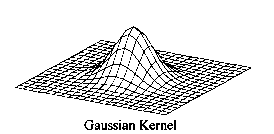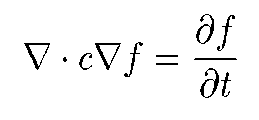Geometry-Limited Diffusion
Ross T. Whitaker
Scale space theory has generated quite a number of useful
algorithms in computer vision and image processing.
Scale space appears to be a useful tool for low-level image analysis,
particularly feature extraction and segmentation. Its affects on
diminishing noise and grouping together similar, proximate structures
has been well documented. However, linear scale space
(which in the most general case can be shown to be blurring with a
Gaussian kernel)

has a tendency to mix, distort, or even destroy some of the features that
it seeks to measure.
This work studies nonuniform or anistropic scale spaces that are generated
by introducing a nonlinear, space varying conductance term into the
diffusion equation, which otherwise gives rise to Gaussian blurring:
 Diffusion equation
Diffusion equation
 Nonuniform diffusion
equation
Nonuniform diffusion
equation
Previous work has shown that the nonuniform diffusion can preserve and
enhance edges while reducing noise. The process is equivalent to an
energy minimization that seeks piecewise homogeneous patches in images.
Contributions of my work are the inclusion of a scale term into the
conductance in order to control the size of structures that are preserved under this
equation as well as the generalization of this scheme to multi-valued
images. This generalization enables the detection of higher-order
geometric features and segmentation based on higher-order properties
such as texture. An empirical analysis shows the stability of the results
in the presence of noise and a quantifiable advantage over linear scale
space (in its most basic form) in segmentation and feature extraction.
This research is described in dissertation (
abstract
or ftp ) as well
as several papers.
Geometry-Limited Diffusion Results